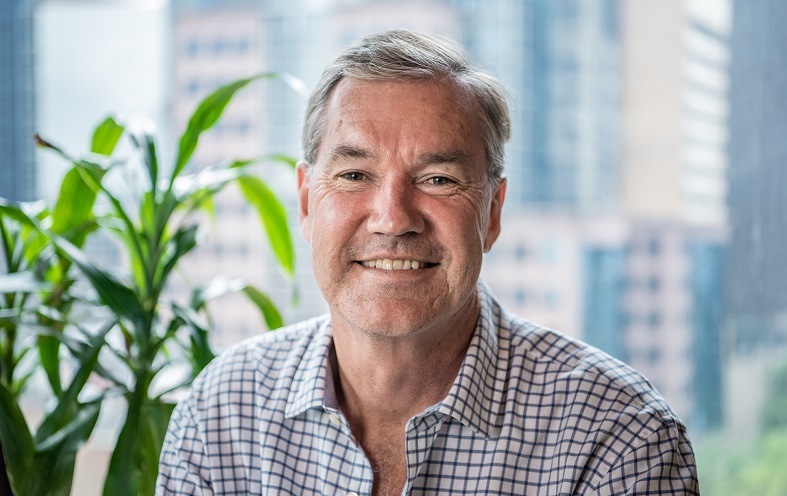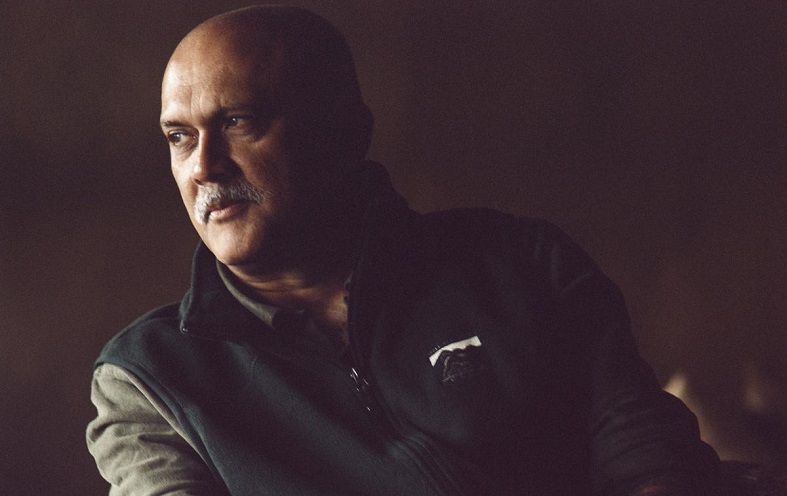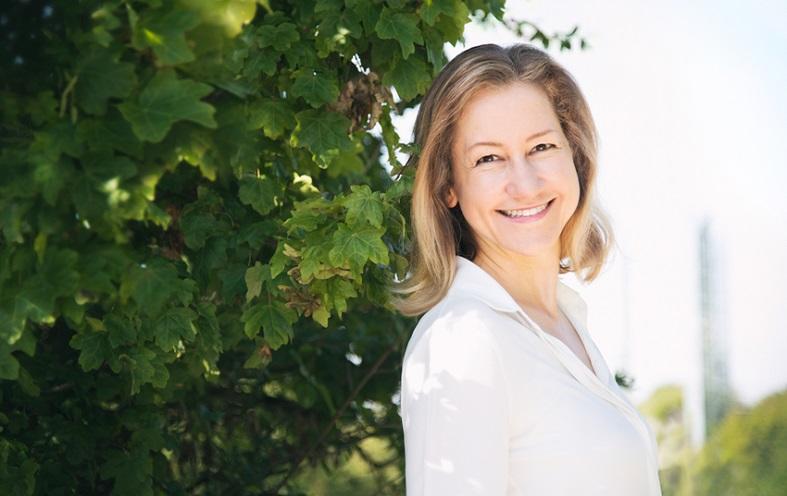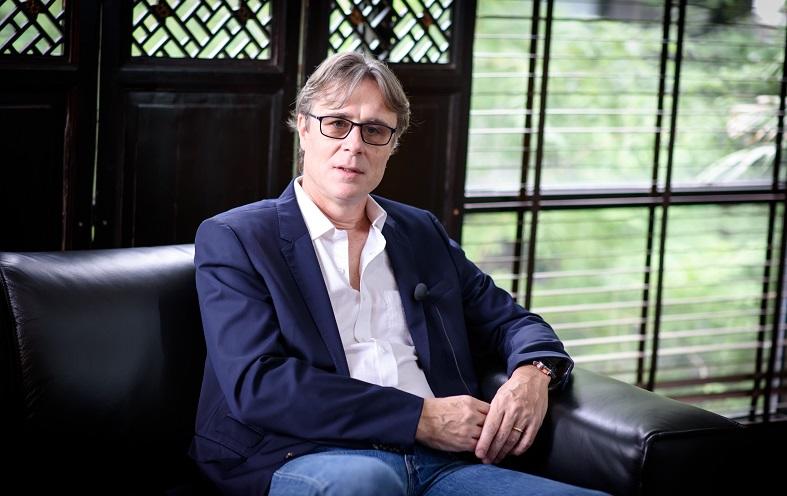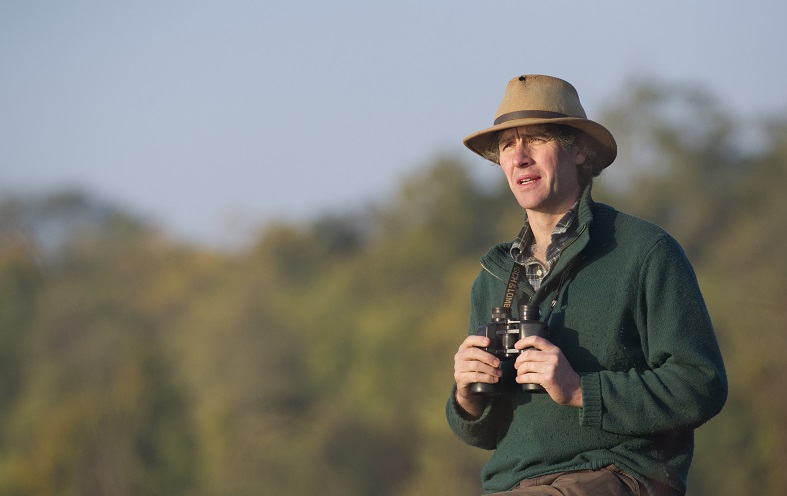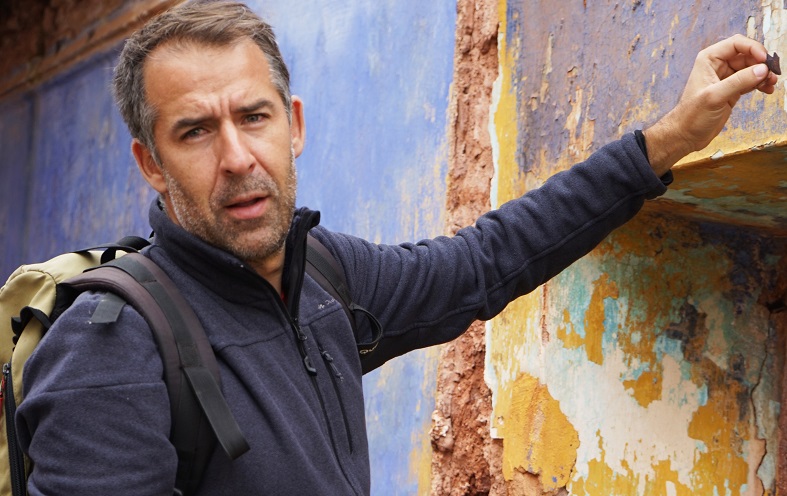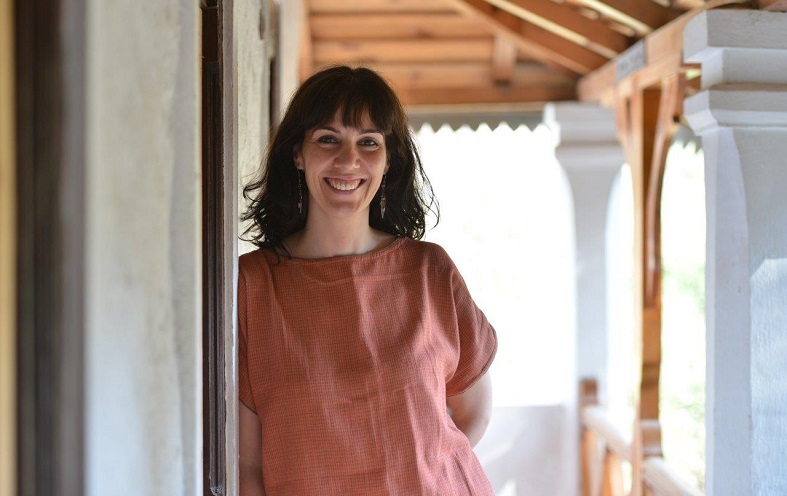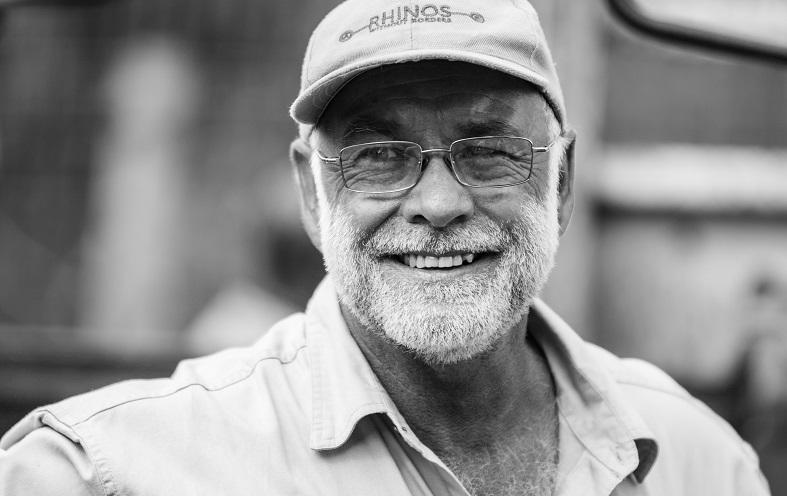
What measures can be taken to protect wildlife and ensure their population thrives when habitat loss and poaching are becoming far too common around the world?
In this interview, Les Carlisle, Group Conservation Manager at andBeyond talks about his three-decade-long experience in wildlife translocation and management of protected areas in Africa, Asia, and South America. Apart from his wildlife management expertise, he explains the importance of community welfare and how the local communities must benefit from conservation to be able to achieve social, economic, and environmental sustainability. Les also highlights the importance of financial discipline and business resilience to future-proof any sustainable business.
Les, you have been part of the andBeyond team for close to three decades and your immense passion for wildlife is evident in the work you do. What inspired you to dedicate your career to the conservation of wildlife and the natural environment?
I was really fortunate to grow up near the Kruger National Park in South Africa and have always had a passion for the creepy crawlies (snakes and insects) that we found at home. My dad did quite a bit of water supply work in Kruger Park and would take me along to enjoy the bigger animals when he was doing inspections or needed to visit the sites. As I grew older, I asked the local veterinarian if I could help him over weekends and during school holidays. He was one of the only private vets working with wildlife in our area and my experience with him fired up my passion to work with wildlife. My first job was looking after five hand-reared cheetahs whose mother had been killed and attempting to teach them to hunt on their own. I was based at a fantastic lodge neighbouring the Kruger Park called Motswari Lodge and, as the funding for the cheetah work became unreliable, I was drawn into guiding at the lodge.
I then joined a full-time game capture and translocation team and started my professional wildlife translocation career. Over the next six years, I translocated wildlife full time and then got my first wildlife management job, which was to build up wildlife herds, specifically high-value species including White Rhino, Sable and Roan antelope and disease-free Cape Buffalo. It was during my four years at this reserve that I was asked my opinion on the possibility of developing a Big Five reserve in the province by my neighbour. I explained in detail the problems and possibilities and concluded that, with the right expertise, it was not only possible but must be done. They employed me to build Phinda Private Game Reserve and that’s how I’ve been able to follow my passion for the last 30 years. It has been a true privilege to pioneer the translocation techniques required to reintroduce lions and elephants and make them relevant to the local communities, a key component of any wildlife area’s sustainability.
In 2019, Les was the recipient of Wild Tomorrow Fund’s prestigious Ukuvikela Wildlife Protector Award – an international award that recognises an individual or organisation working tirelessly to protect endangered and threatened wildlife and their habitat in Africa. Video credit: Wild Tomorrow Fund
How did andBeyond’s business model develop over these years?
Remarkably, the core focus of the business model hasn’t changed over the last 30 years and the mantra has remained unchanged – Care of the Land, Care of the Wildlife and, most importantly, Care of the People. This culture of care forms the bedrock for the way we do things. The company’s international and now intercontinental expansion has been based on these three pillars.
We aim to leave the world in a better state than we found it. The future of wildlife conservation is totally dependent on getting the community interface right and on our collective efforts to stem global warming. The main new development that we are seeing is that it is becoming increasingly obvious that we need much more collaboration in everything we do to be able to make a significant positive impact.
Could you share some of the learnings around this model?
Firstly, the obvious wildlife conservation learnings are that we can recover habitats and expand the range, but we need the political will to enable us to do so.
Secondly, we need to work together with everyone. Even if we disagree on certain things, we must work together on the things we do agree on.
Lastly, and most importantly, we must work with local people and not for them.
This is a lesson that I learnt early on in our community engagement. I am full of energy and passionate about helping, so I went to help a community secure their water wells. I had seen a woman filling buckets of water for her own use from amongst the cattle that were drinking at the same water point, so the need was clear. I spoke to the tribal council, then raised the money, organised a training session and built the first two concrete rings that were needed with the ring moulds supplied by the project, then showed them how to make 50m of chain link fencing to keep the livestock from polluting the water holes. I was really pleased that I had made a difference for them.
Three months later I returned to see how they were getting on and was completely floored by the fact that they had not done a single thing. Not even a single metre of wire had been produced and there were no more concrete rings. I asked our community officer why this was the case and he laughed and told me that this was the first time that I had asked and not just told them what I was doing. They didn’t see securing their water as a priority but I did.
The lesson was clear – with the best intentions in the world and using all my passion and energy, I had missed the basic first step in community engagement by telling them that they needed to secure their water instead of asking them what their priorities were.
It’s very easy for us to impose on communities what we think they need and the donor world has done this for years. What is much more sustainable and the only real way to help is to help them achieve what they see as their priorities, and work with them and not for them.
One of the most frequent questions linked to sustainability in tourism is how to measure it, especially in the short term. How do you approach this at andBeyond?
The sustainability world can be daunting. The planet is in trouble and we need to do everything better. But, if you approach things from this all-encompassing perspective you won’t get a single lodge to make any difference, as it’s all too much and too overwhelming.
Most importantly, sustainability means financial discipline, as you cannot save or protect anything without financial resources. Tourism projects have the biggest environmental and social impact when they fail financially. What we did was break our sustainability efforts down into bite-sized chunks and then measure them through an internal sustainability audit.
Once a year, we get the managers to set their own sustainability targets, using the group targets as a guide. Most importantly, the managers are measured against the targets they set themselves. The rules of engagement are also clear – only one or, at most, two actions are needed to keep moving the needle. In this way and with time, you really start to get buy-in. The managers who are responsible for making the difference at the lodge level start to take ownership of the audit and, in many cases, to see the benefits for themselves, environmentally, socially and, often, financially.
Looking back over the last 30 years, what have been some of the company’s sustainability success stories?
Care of the wildlife.
On the conservation front, our biggest success has been the fact that not only has andBeyond Phinda Private Game Reserve become an internationally acclaimed Big Five destination, but it has supplied Rhino, Elephant, Lion and Cheetah to many new parks, locally and in other countries.
The model has been applied in India. The reversal of the local extinction of Gaur in Bandhavgarh National Park, which andBeyond has assisted in, has given Indian conservationists the capacity and equipment to translocate many other species, such as Black Buck, Nilgai, Swamp Deer and Spotted Deer.
We have also taken the model to South America. In Chile, we have engaged with local communities at andBeyond Vira Vira. In Argentina, we advised Tompkins Conservation on reintroducing jaguars to the Iberá Wetlands, and in the Pantanal in Brazil, we advised on the process to habituate Jaguars to tourism to help secure them.
Our milestones are best illustrated in the following FY 2019 impact table:
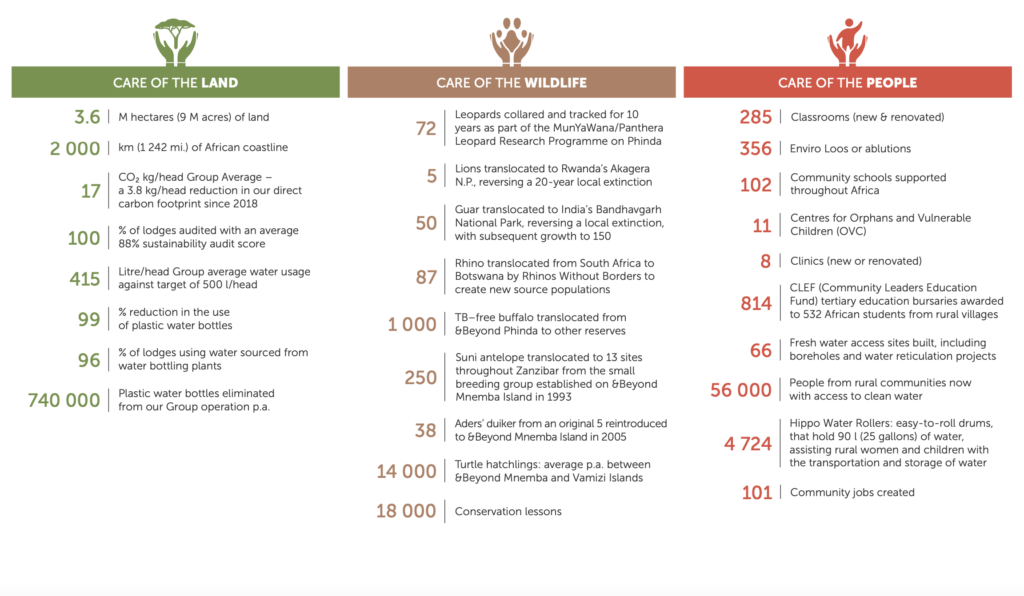
With the continuous loss of habitat, unmitigated threat to species, and climate change, how do you see the business of andBeyond – and tourism in general – evolving over the next 30 years?
I think the most important part of future-proofing the planet is going to be how we engage with the population issues and the pressures that this burgeoning population applies to the world’s wild places and the natural resources that we need for our survival.
Within our industry, future-proofing is going to depend on collaborations and shared expertise, as guests will increasingly demand sustainability and impact-proof points when making their travel decisions.
To your mind, is tourism a strong enough tool; can the conservation battle still be won?
In my mind, tourism has always only been one of the tools used for the conservation of resources. It has become a really strong voice and has a critically important role to play in securing certain conservation areas.
Space for conservation is the single biggest issue and that is directly related to the world’s population. We need a much bigger focus on managing the population explosion to have any chance of success.
Current tourism trends and businesses won’t be able to secure all the wildlife areas that we need to keep our ecosystems as healthy as possible, so we will need to rely on other value-add approaches, including the innovative use of those buffer zones and unprotected spaces around parks and reserves – areas that don’t have large numbers of viable wildlife – to make these regions sustainable.
In the developing world, poverty is the enemy and we need to focus on it by combining our efforts and our limited resources. Together we will be able to have a much more positive impact with our limited resources and share in the learnings of others on reducing our negative impact.
We will need intense focus to make the industrialised nations of the developed world, who have completely manipulated their environments, support the developing nations in realising their own development, but avoiding the wholescale destruction of the original wildlife and environments that occurred in the industrial revolution. We need to help the developing world to develop in a sustainable way, securing the natural processes and resources that the whole planet needs to sustain life on earth.
The absence of international tourism this year due to the coronavirus outbreak has put decades-worth of conservation and sustainability efforts at risk – strongly affecting the communities which depend on tourism income. How can communities and destinations overcome the current crisis?
There is no doubt that the unpredictability of international tourism will remain a real risk to conservation as we climb out of this crisis. As we move forward, we will need to be more innovative in non-tourism based opportunities to support and develop the resilience of local economies and communities. The economies and communities that perceive value in wildlife will need to be more innovative in protecting that wildlife and the ecology that supports it.
Which parts of your work would you consider the most difficult? Which are the main hurdles in day to day conservation business?
The biggest single risk to conservation today is the fact that uninformed and emotive social media prompts hysterical reactions from people that are completely disconnected from the potential consequences of their actions. It is really difficult to explain to people that there is no silver bullet for conservation.
Conservation is complicated and has to be locally crafted to achieve a local conservation outcome. Social media hype over-simplifies complex conservation issues without considering the possible negative or positive conservation impacts and the social and economic issues that underlie the action.
Anything else you would like to mention?
The most important thing to understand about sustainability is that it is an approach and the cultural way of doing things, rather than a single event. It took 10 years for andBeyond to really start measuring the impact of the model and now after 30 years of operation it’s very clear that “Sustainability is a process and not an event”.
Thank you, Les.
Connect with Les Carlisle on LinkedIn. Find out more about andBeyond’s conservation efforts and the positive impact it is making here.
Enjoyed our interview with Les Carlisle on how the successful protection and survival of wildlife in their natural habitats can be achieved through community engagement and financial discipline? Thanks for sharing!

